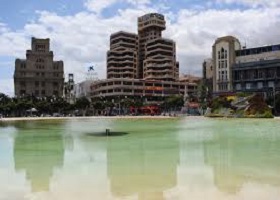8 Days - The Colorful Canary Islands

Starting from
$3,299*
Lisbon to Santa Cruz de Tenerife
Ship: Wind Spirit
Departure Date : Feb 28 2026 | Nov 09 2026 | Jan 26 2027
Itinerary
Day Lisbon, PortugalDepart 03:00 PM
"Lisbon, the capital of Portugal, is a wealth of sights, tastes and sounds. An ensemble of neighborhoods both old and new, its a city full of history, culture and tradition. After the devastating earthquake that struck in 1755, reconstruction began and the rebuilt Baixa area quickly became one of the city's busiest districts. From there, you can glance up at São Jorge Castle on one hill while in another direction you'll find Chiado, one of the trendiest and most elegant neighborhoods. The spirit of Lisbon can be encapsulated by the soulful musical genre, fado, which can best be enjoyed in the Alfama, the city's oldest neighborhood. Enter one of the area's old-school taverns and listen to passionate renditions of Fado Vadio, sung by amateurs, often after a round of aguardiente, an anise-flavored liquor."
"Lisbon, the capital of Portugal, is a wealth of sights, tastes and sounds. An ensemble of neighborhoods both old and new, its a city full of history, culture and tradition. After the devastating earthquake that struck in 1755, reconstruction began and the rebuilt Baixa area quickly became one of the city's busiest districts. From there, you can glance up at São Jorge Castle on one hill while in another direction you'll find Chiado, one of the trendiest and most elegant neighborhoods. The spirit of Lisbon can be encapsulated by the soulful musical genre, fado, which can best be enjoyed in the Alfama, the city's oldest neighborhood. Enter one of the area's old-school taverns and listen to passionate renditions of Fado Vadio, sung by amateurs, often after a round of aguardiente, an anise-flavored liquor."
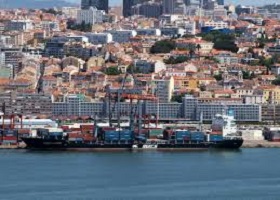
Day At Sea
Days at Sea
Days at Sea
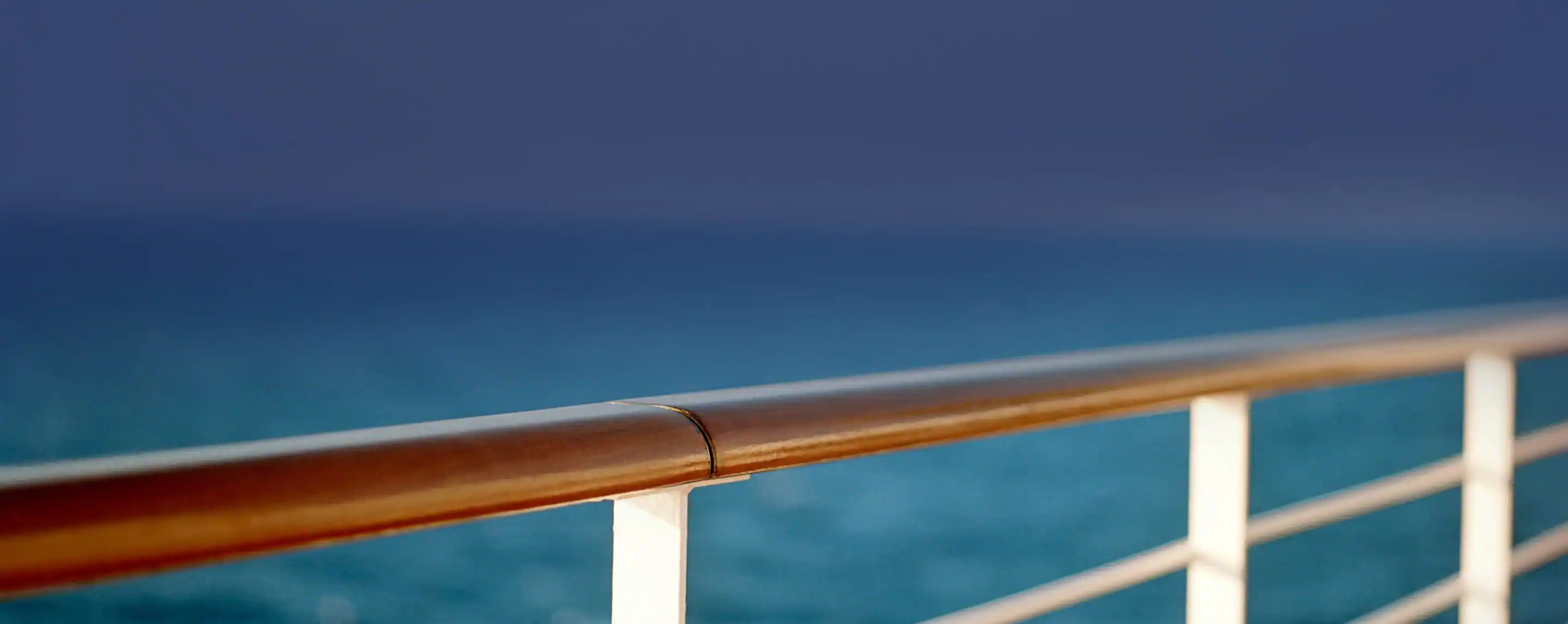
Day At Sea
Days at Sea
Days at Sea

Day Funchal (Madeira), PortugalArrives 08:00 AM Departs 11:00 PM
"When Portuguese navigators set foot on the island of Madeira in 1419, they were convinced that they had arrived at the Garden of Eden. Today, the experience is no different for cruise passengers docking in Funchal, Madeiras largest city and the capital of a namesake autonomous region. Madeiras consistently warm weather and volcanic mountains lush with tropical flowers and gardens drew European settlers whose influence gave rise to much of what its known for: Madeira wine, poncha (a traditional drink made of distilled sugarcane, honey and lemon) and handiwork such as embroidery. Wander cosmopolitan Funchals streets paved with black and white mosaics, a grand seafront promenade and old-fashioned shops, restaurants and cafés housed in terra-cotta-roofed buildings."
"When Portuguese navigators set foot on the island of Madeira in 1419, they were convinced that they had arrived at the Garden of Eden. Today, the experience is no different for cruise passengers docking in Funchal, Madeiras largest city and the capital of a namesake autonomous region. Madeiras consistently warm weather and volcanic mountains lush with tropical flowers and gardens drew European settlers whose influence gave rise to much of what its known for: Madeira wine, poncha (a traditional drink made of distilled sugarcane, honey and lemon) and handiwork such as embroidery. Wander cosmopolitan Funchals streets paved with black and white mosaics, a grand seafront promenade and old-fashioned shops, restaurants and cafés housed in terra-cotta-roofed buildings."
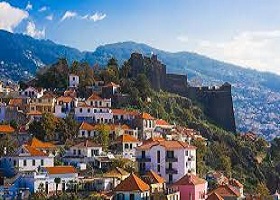
Day At Sea
Days at Sea
Days at Sea

Day San Sebastian de la Gomera, Canary Islands, SpainArrives 08:00 AM Departs 10:00 PM
The second smallest of the Canary Islands maintains features unique in all the world. Deeply corrugated by gorges cut into its volcanic slopes, its highest peaks continually wring mists from the Trade Winds, resulting in a lush laurel forest ecosystem that UNESCO has designated a valuable natural heritage for all mankind. Those same precipitous gorges isolated the inhabitants from each other, and gave rise to the Silbo Gomero, a unique language that is whistled rather than spoken. This has been designated by UNESCO as a precious cultural heritage. It is taught to children in the primary schools, as a way of preserving it. Visit the photogenic, 15th Century Conde Tower, to see early nautical charts, or travel to bizarre volcanic features such as the columnar rock formations known as Los Organos. This was Christopher Columbuss last port of call before sailing west in 1492. He carried a gift from the local governor: the first sugarcane plants to reach the New World.
The second smallest of the Canary Islands maintains features unique in all the world. Deeply corrugated by gorges cut into its volcanic slopes, its highest peaks continually wring mists from the Trade Winds, resulting in a lush laurel forest ecosystem that UNESCO has designated a valuable natural heritage for all mankind. Those same precipitous gorges isolated the inhabitants from each other, and gave rise to the Silbo Gomero, a unique language that is whistled rather than spoken. This has been designated by UNESCO as a precious cultural heritage. It is taught to children in the primary schools, as a way of preserving it. Visit the photogenic, 15th Century Conde Tower, to see early nautical charts, or travel to bizarre volcanic features such as the columnar rock formations known as Los Organos. This was Christopher Columbuss last port of call before sailing west in 1492. He carried a gift from the local governor: the first sugarcane plants to reach the New World.
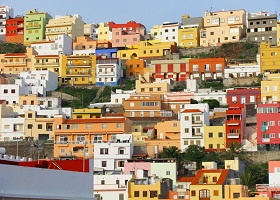
Day Santa Cruz de La Palma, Canarias, SpainArrives 08:00 AM Departs 05:00 PM
A visit to the wild island of La Palma�the most northern and westerly of the Canary Islands�is about as close as it gets to visiting Jurassic Park. Prehistoric junglelike forests with wispy waterfalls and babbling streams blanket the north of the isle, while the south feels dry and scorched with simmering dormant volcanoes. The craggy coastline and black-sand beaches sit below the soaring ridgeline of the eight-kilometer-wide (five-mile-wide) Caldera de Taburiente. It�s no wonder the entire island was classified as a UNESCO Biosphere Reserve in 2002. Exploring nature should be priority number one when visiting La Palma, but it�s impossible to understand the island�s culture without a visit to Santa Cruz, La Palma�s second-largest city and its only port. Its claim to fame�other than being the birthplace of the world-famous shoe designer Manolo Blahnik�is its clutch of colorful colonial buildings with traditional Canarian wooden balconies. Wandering down Calle O�Daly (also called Calle Real) and watching the waves crash along Avenida Mar�tima will give you the most photo-worthy views of the city. Don�t let the ship sail before you�ve tasted the island�s volcanic wines in Fuencaliente, or sampled local cheese and mojo at the daily market in Los Llanos.
A visit to the wild island of La Palma�the most northern and westerly of the Canary Islands�is about as close as it gets to visiting Jurassic Park. Prehistoric junglelike forests with wispy waterfalls and babbling streams blanket the north of the isle, while the south feels dry and scorched with simmering dormant volcanoes. The craggy coastline and black-sand beaches sit below the soaring ridgeline of the eight-kilometer-wide (five-mile-wide) Caldera de Taburiente. It�s no wonder the entire island was classified as a UNESCO Biosphere Reserve in 2002. Exploring nature should be priority number one when visiting La Palma, but it�s impossible to understand the island�s culture without a visit to Santa Cruz, La Palma�s second-largest city and its only port. Its claim to fame�other than being the birthplace of the world-famous shoe designer Manolo Blahnik�is its clutch of colorful colonial buildings with traditional Canarian wooden balconies. Wandering down Calle O�Daly (also called Calle Real) and watching the waves crash along Avenida Mar�tima will give you the most photo-worthy views of the city. Don�t let the ship sail before you�ve tasted the island�s volcanic wines in Fuencaliente, or sampled local cheese and mojo at the daily market in Los Llanos.

Day Las Palmas, Gran Canaria, Canary Islands, SpainArrives 01:00 PM Departs 10:00 PM
Las Palmas is a large Spanish city, which just happens to be on the island of Gran Canaria. That fact adds the exotic, slightly African and international flavor to the place. It played an important part in the early exploration and exploitation of Africa and the New World, some of which is recounted in the Casa de Colon Museum. Columbus may have slept there, but it was never his house. It was actually the mansion of early governors. Other museums of note are the Museo Canaria with a number of Cro Magnon skulls, and the fascinating Elder Museum of Science and Technology. For shopping, strolling and general local interest, head to La Vegueta, the oldest quarter and a UNESCO World Heritage Site, and the adjacent Triana high street shopping district. Most visitors are here for the beaches, and the municipal Playa de Las Canteras is a long, clean and safe option if that is your intention. The Canaria in the name of the islands refers to the indigenous Presa Canaria breed of dogs, which are large, strong and made quite an impression on the earliest Spanish visitors.
Las Palmas is a large Spanish city, which just happens to be on the island of Gran Canaria. That fact adds the exotic, slightly African and international flavor to the place. It played an important part in the early exploration and exploitation of Africa and the New World, some of which is recounted in the Casa de Colon Museum. Columbus may have slept there, but it was never his house. It was actually the mansion of early governors. Other museums of note are the Museo Canaria with a number of Cro Magnon skulls, and the fascinating Elder Museum of Science and Technology. For shopping, strolling and general local interest, head to La Vegueta, the oldest quarter and a UNESCO World Heritage Site, and the adjacent Triana high street shopping district. Most visitors are here for the beaches, and the municipal Playa de Las Canteras is a long, clean and safe option if that is your intention. The Canaria in the name of the islands refers to the indigenous Presa Canaria breed of dogs, which are large, strong and made quite an impression on the earliest Spanish visitors.
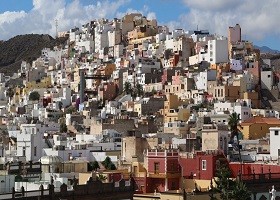
Day Santa Cruz (Tenerife), Canary Islands, SpainArrives 07:00 AM
"Though part of Spain, the Canary Islands sit in the open Atlantic Ocean, about 100 kilometers (60 miles) west of Morocco. The mild climate mixed with a rich volcanic landscape and beautiful sandy beaches makes the main city of Santa Cruz, on the largest island of Tenerife, a welcome stop for many cruise voyages. The isolated island is dominated by the Teide volcano, the tallest mountain in Spain and site of one of the worlds most popular national parks. A cable car carries visitors to the top, offering unrivaled views of the island. Travelers interested in learning about the history of the island, its unique wildlife and the population of indigenous people that lived here before the arrival of European settlers should visit the Museum of Nature and Man in Santa Cruz, while architecture buffs can stroll the streets of La Laguna to see colonial-era mansions. And travelers keen on food and wine should venture into the countryside to sample local dishes or make the drive to Casa del Vino, where they can learn about, and taste, local wines while shopping for a bottle or two to bring home. "
"Though part of Spain, the Canary Islands sit in the open Atlantic Ocean, about 100 kilometers (60 miles) west of Morocco. The mild climate mixed with a rich volcanic landscape and beautiful sandy beaches makes the main city of Santa Cruz, on the largest island of Tenerife, a welcome stop for many cruise voyages. The isolated island is dominated by the Teide volcano, the tallest mountain in Spain and site of one of the worlds most popular national parks. A cable car carries visitors to the top, offering unrivaled views of the island. Travelers interested in learning about the history of the island, its unique wildlife and the population of indigenous people that lived here before the arrival of European settlers should visit the Museum of Nature and Man in Santa Cruz, while architecture buffs can stroll the streets of La Laguna to see colonial-era mansions. And travelers keen on food and wine should venture into the countryside to sample local dishes or make the drive to Casa del Vino, where they can learn about, and taste, local wines while shopping for a bottle or two to bring home. "
